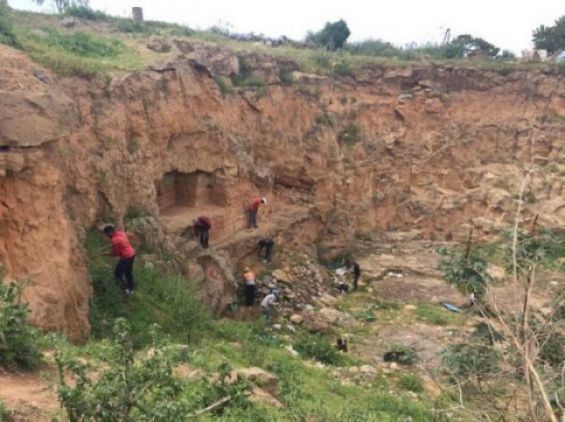The Cave of the Rhinoceros, located in the Oulad Hamida 1 quarry, formerly known as Thomas III, has just been declared one of the most important sites in Africa. A French-Moroccan team published this week a study about the oldest faunal remains butchered and consumed in caves by men on the African continent.
Entitled «Earliest African evidence of carcass processing and consumption in cave» and published by scientific journal Nature, the study led by researchers from several laboratories in Morocco, France, China and Germany, is based on gazelle, alcelaphin, and zebra bones and other tools.

These 37 bones were discovered in an Acheulean site (from the Lower Paleolithic period) dated 700,000 years ago and located in said cave, near Casablanca. They show «traces of butchery on and demonstrate that hominins had primary access to herbivore carcasses».
The peculiarity of the Rhinoceros Cave
The study notes that to date, in Africa, «evidence for animal processing and consumption in caves routinely used as living spaces is only documented in the late Middle Pleistocene of the North and South of the continent and postdates the Middle Pleistocene in East Africa.
«Here we report the earliest evidence in a North-African cave (Grotte des Rhinocéros at Casablanca, Morocco) of cut, percussion and human gnawing marks on faunal remains directly associated with lithic knapping activities in the same space and in a well-documented stratified context».
«Hominins brought and consumed meat in the cave, as documented by herbivore bones bearing human tooth marks concentrated in a circumscribed area of the excavation», explains the study, documenting the earliest evidence for «the recurrent use by early Middle Pleistocene hominins of a North African cave site 400 000 years before that by Homo sapiens at Jebel Irhoud (Morocco)».
The Rhinoceros Cave was discovered in 1991, as part of the French-Moroccan cooperative program at the Oulad Hamida 1 quarry, an extension of the former Thomas III quarry, located 1 km from the current Atlantic coast.





 chargement...
chargement...













